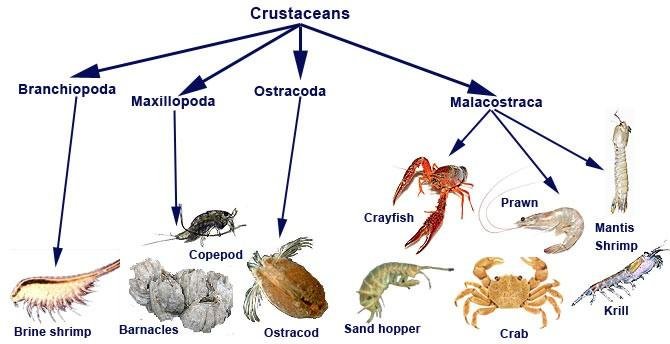Athropodes forms the most interesting and various group of invertebrates. The most successful in there conquest of the land habitat and they show a wild range of adaptative radiation. The most prolific are aquatic while the most advance live an land and air breathing. Athropodes share some basic features with annelida.
I. They are bilaterally symmetrical.
II. Triploblastic coelomates.
III. They display a high degree of metamic segmentation.
IV. The anus is situated in the posterior settlement(segment).
V. They posess blood system(fluid).
VI. The central nervous system is doubled ventral solid nerve curved situated ventrally to the gut and cemented to the cerebral ganglia by two conisures encercling the anterior end of the gut.
However,athropos show the following characteristics which makes them distinct from annelis.
a. They posses pair of jointed limbs.
b. The mouth is situated ventrally some ways behind the more anterior segment and not in front as in annelids.
c. They posses a chitineous exoskeleton which is inparmeable to gases hence, development of respiratory organ in form of gills and trachea system in insects or lung book in spiders.* item1. item
d. Muscles exist in strands attached internally to various parts of the exoskeleton which are moved in relation to one another like contraction.
e. Dot system of the respiratory system paforates the hearts and circulatory system is open.
f. The process of head formation (cephalization)is much more advanced in athropos than in annelids and concentration of well developed sence organ in athropos.
In all athropods, there is the presence of a though waterproof thick layer made of chitin used for the protection of all athropods. This thin layer has its advantages and disadvantages.
ADVANTAGES OF EXOSKELETON.
Provides support particularly on land.
Serves as protection from physical damage.
It has low density which is important for flying insects.
Makes flexible joint between segments possible.
Addition of wax layer for special organs/ glands in their ligaments.
help prevent decigation on land.
The EXOSKELETON can be modified to form hard jaws for bitten,piercing, sucking and grinding.
DISADVANTAGES OF EXOSKELETON.
a. EXOSKELETON makes body size limited.
b. It restricts growth soperiodic moulting or ecdysis is required for growth.
Due to the vast groups in athropos they have been subdivided into subphylum which are crustacia,myriapoda, insecta, arachnida. We would be look at each one of the subphylum and site some examples.
CRUSTACIANS: the crustacians include crabs, and crayfishof two pairs if antenna. They also are aquatic and breed by means of gills or through the cuticle of the body.

MYRIAPODA: are those with elongated bodies with pairs of each segment of their body except the first three segment. They have a single pair of antenna and they breath by means of trachia . Example include millipids and centipids etc.

INSECTA: They are identified by their bodies been divided by constriction into three pairs namely the head, thorax and abdomen.
 the thorax bear three pairs of walking leg while the abdomen is the body of the legs. Only one pair of antennae is present a pair of compound eye and it's breathing organ is trachea.
the thorax bear three pairs of walking leg while the abdomen is the body of the legs. Only one pair of antennae is present a pair of compound eye and it's breathing organ is trachea.ARACHNIDA: consist of assorted group with members lacking antennae with five pairs of walking legs. The body is divided into two parts which are the head and cephalothorax(fused head and thorax together).

Drop some references and source your photos and it might be worth a steemstem upvote. Check out the steemstem guidelines for curation: Steemstem Helpful Guidelines and Being A Steemstem Member